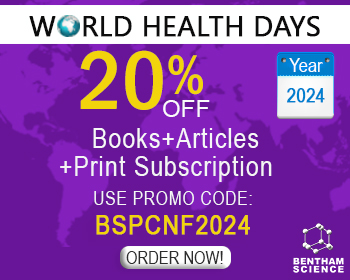Abstract
Ischemic stroke is one of the main causes of mortality and disability worldwide. However, efficient therapeutic strategies are still lacking. Stem/progenitor cell-based therapy, with its vigorous advantages, has emerged as a promising tool for the treatment of ischemic stroke. The mechanisms involve new neural cells and neuronal circuitry formation, antioxidation, inflammation alleviation, angiogenesis, and neurogenesis promotion. In the past decades, in-depth studies have suggested that cell therapy could promote vascular stabilization and decrease blood-brain barrier (BBB) leakage after ischemic stroke. However, the effects and underlying mechanisms on BBB integrity induced by the engrafted cells in ischemic stroke have not been reviewed yet. Herein, we will update the progress in research on the effects of cell therapy on BBB integrity after ischemic stroke and review the underlying mechanisms. First, we will present an overview of BBB dysfunction under the ischemic condition and cells engraftment for ischemic treatment. Then, we will summarize and discuss the current knowledge about the effects and underlying mechanisms of cell therapy on BBB integrity after ischemic stroke. In particular, we will review the most recent studies in regard to the relationship between cell therapy and BBB in tissue plasminogen activator (t-PA)-mediated therapy and diabetic stroke.
Keywords: Ischemic stroke, stem cells, blood-brain barrier, tissue plasminogen activator, neurogenesis.
[http://dx.doi.org/10.3389/fneur.2018.00034] [PMID: 29467713]
[http://dx.doi.org/10.1007/s12975-017-0580-0] [PMID: 29075984]
[http://dx.doi.org/10.1016/j.brainres.2004.02.072] [PMID: 15126123]
[http://dx.doi.org/10.1038/sj.jcbfm.9600475] [PMID: 17356562]
[http://dx.doi.org/10.1007/s12975-019-00736-5] [PMID: 31654281]
[http://dx.doi.org/10.1038/nm.3407] [PMID: 24309662]
[http://dx.doi.org/10.1016/j.nbd.2009.07.030] [PMID: 19664713]
[http://dx.doi.org/10.3389/fphar.2012.00046] [PMID: 22479246]
[http://dx.doi.org/10.1111/febs.13412] [PMID: 26277326]
[http://dx.doi.org/10.1096/fasebj.7.11.8370472] [PMID: 8370472]
[http://dx.doi.org/10.1101/cshperspect.a020412] [PMID: 25561720]
[http://dx.doi.org/10.1016/j.devcel.2011.07.001] [PMID: 21839917]
[http://dx.doi.org/10.3389/fphar.2019.01114] [PMID: 31611796]
[http://dx.doi.org/10.1007/s12975-017-0574-y] [PMID: 29103101]
[http://dx.doi.org/10.2174/138161211797440113] [PMID: 21827409]
[http://dx.doi.org/10.1111/apha.12250] [PMID: 24629161]
[http://dx.doi.org/10.1007/s12975-019-00744-5] [PMID: 31701356]
[http://dx.doi.org/10.1161/01.STR.21.4.582] [PMID: 1691534]
[http://dx.doi.org/10.1111/jon.12225] [PMID: 25702824]
[http://dx.doi.org/10.1007/BF00688633] [PMID: 3907257]
[http://dx.doi.org/10.1038/ncomms10523] [PMID: 26813496]
[http://dx.doi.org/10.1161/STROKEAHA.110.608257] [PMID: 21940972]
[http://dx.doi.org/10.1016/j.jns.2008.05.019] [PMID: 18573502]
[http://dx.doi.org/10.1155/2013/435093] [PMID: 23997771]
[http://dx.doi.org/10.1208/s12248-017-0091-7] [PMID: 28484963]
[http://dx.doi.org/10.1007/s12975-017-0598-3] [PMID: 29275501]
[http://dx.doi.org/10.1054/jocn.2001.1031] [PMID: 11922696]
[http://dx.doi.org/10.1007/s10072-007-0814-0] [PMID: 17690845]
[http://dx.doi.org/10.1016/S0092-8674(00)80783-7] [PMID: 10380923]
[PMID: 15366252]
[http://dx.doi.org/10.1523/JNEUROSCI.16-06-02027.1996] [PMID: 8604047]
[http://dx.doi.org/10.1073/pnas.081011098] [PMID: 11296300]
[http://dx.doi.org/10.1002/jnr.20246] [PMID: 15378509]
[http://dx.doi.org/10.1161/01.STR.32.8.1890] [PMID: 11486122]
[http://dx.doi.org/10.1016/S0306-4522(01)00117-8] [PMID: 11483298]
[http://dx.doi.org/10.1002/jnr.20604] [PMID: 16047371]
[http://dx.doi.org/10.1073/pnas.0603512103] [PMID: 16924107]
[http://dx.doi.org/10.1111/j.1460-9568.2009.07043.x] [PMID: 20104652]
[http://dx.doi.org/10.1146/annurev.cellbio.17.1.387] [PMID: 11687494]
[http://dx.doi.org/10.3727/096368912X657936] [PMID: 23067568]
[http://dx.doi.org/10.2147/VHRM.S25745] [PMID: 23091389]
[http://dx.doi.org/10.1089/scd.2018.0254] [PMID: 31038013]
[http://dx.doi.org/10.1007/s12975-016-0482-6] [PMID: 27384771]
[http://dx.doi.org/10.1089/scd.2008.0253] [PMID: 19099374]
[http://dx.doi.org/10.1634/stemcells.2007-0054] [PMID: 17395768]
[http://dx.doi.org/10.1182/blood.V95.11.3289] [PMID: 10828007]
[http://dx.doi.org/10.1126/science.282.5391.1145] [PMID: 9804556]
[http://dx.doi.org/10.1111/j.1440-1789.2008.00993.x] [PMID: 19170896]
[http://dx.doi.org/10.1097/WNR.0b013e32833a7d2c] [PMID: 20431496]
[http://dx.doi.org/10.1590/S0102-86502012000400009] [PMID: 22534809]
[http://dx.doi.org/10.1038/sj.leu.2402962] [PMID: 12764382]
[http://dx.doi.org/10.1161/STROKEAHA.108.533117] [PMID: 19064799]
[http://dx.doi.org/10.1016/j.molmed.2012.02.003] [PMID: 22459358]
[http://dx.doi.org/10.1038/labinvest.3780433] [PMID: 11950897]
[http://dx.doi.org/10.1016/S0306-4522(02)00175-6] [PMID: 12150788]
[http://dx.doi.org/10.1002/stem.1808] [PMID: 25100404]
[http://dx.doi.org/10.1038/72256] [PMID: 10655103]
[http://dx.doi.org/10.1186/s12974-018-1153-1] [PMID: 29724240]
[PMID: 30485210]
[http://dx.doi.org/10.7150/thno.28029] [PMID: 30613272]
[http://dx.doi.org/10.3727/096368915X686887] [PMID: 25647744]
[http://dx.doi.org/10.1016/j.neuroscience.2019.04.018] [PMID: 30999031]
[http://dx.doi.org/10.1016/j.nbd.2013.06.001] [PMID: 23759293]
[http://dx.doi.org/10.1016/S0006-8993(01)02328-9] [PMID: 11384610]
[http://dx.doi.org/10.1161/STROKEAHA.111.000528] [PMID: 23821228]
[http://dx.doi.org/10.1161/01.STR.0000141680.49960.d7] [PMID: 15345799]
[http://dx.doi.org/10.1179/1743132812Y.0000000151] [PMID: 23485057]
[http://dx.doi.org/10.1186/1479-5876-8-63] [PMID: 20584315]
[http://dx.doi.org/10.12659/MSM.907096] [PMID: 29888735]
[http://dx.doi.org/10.3325/cmj.2019.60.439] [PMID: 31686458]
[http://dx.doi.org/10.1089/neu.2018.5728] [PMID: 29695199]
[http://dx.doi.org/10.1161/hs1101.098367] [PMID: 11692034]
[http://dx.doi.org/10.1161/01.STR.0000141681.06735.9b] [PMID: 15322304]
[http://dx.doi.org/10.1016/j.brainres.2015.08.003] [PMID: 26279113]
[http://dx.doi.org/10.1016/j.nbd.2011.04.005] [PMID: 21515377]
[http://dx.doi.org/10.1016/j.neuroscience.2012.09.066] [PMID: 23041512]
[http://dx.doi.org/10.1177/0963689719836763] [PMID: 31066288]
[http://dx.doi.org/10.1007/s10517-012-1890-6] [PMID: 23330106]
[http://dx.doi.org/10.1016/j.jchemneu.2018.08.004] [PMID: 30121327]
[http://dx.doi.org/10.1016/j.jchemneu.2019.101707] [PMID: 31672459]
[http://dx.doi.org/10.1016/j.nbd.2014.11.016] [PMID: 25484283]
[http://dx.doi.org/10.1111/j.1460-9568.2007.05702.x] [PMID: 17686040]
[http://dx.doi.org/10.1002/jnr.21542] [PMID: 17975825]
[http://dx.doi.org/10.1186/scrt519] [PMID: 25418536]
[http://dx.doi.org/10.5966/sctm.2014-0184] [PMID: 26025980]
[http://dx.doi.org/10.1186/s13287-017-0677-0] [PMID: 29115993]
[http://dx.doi.org/10.1186/1742-2094-11-107] [PMID: 24927761]
[http://dx.doi.org/10.1002/stem.1098] [PMID: 22593021]
[http://dx.doi.org/10.1016/j.expneurol.2015.07.023] [PMID: 26253224]
[http://dx.doi.org/10.1038/cddis.2014.359] [PMID: 25144721]
[http://dx.doi.org/10.1161/01.ATV.0000073832.49290.B5] [PMID: 12714439]
[http://dx.doi.org/10.1161/STROKEAHA.107.489401] [PMID: 18063830]
[http://dx.doi.org/10.1002/ana.21919] [PMID: 20437584]
[http://dx.doi.org/10.5966/sctm.2013-0066] [PMID: 23934909]
[http://dx.doi.org/10.1002/stem.2578] [PMID: 28142208]
[http://dx.doi.org/10.1016/j.lfs.2019.116774] [PMID: 31689438]
[http://dx.doi.org/10.1212/WNL.0000000000004801] [PMID: 29237797]
[http://dx.doi.org/10.5966/sctm.2011-0039] [PMID: 23197777]
[http://dx.doi.org/10.1089/scd.2009.0340] [PMID: 19860544]
[http://dx.doi.org/10.1002/stem.1188] [PMID: 22865647]
[http://dx.doi.org/10.1016/j.omtm.2018.07.009] [PMID: 30151417]
[http://dx.doi.org/10.1007/s12975-019-00735-6] [PMID: 31522408]
[http://dx.doi.org/10.3171/2016.8.JNS16240] [PMID: 28059661]
[http://dx.doi.org/10.1007/s12975-017-0563-1] [PMID: 28836238]
[http://dx.doi.org/10.1002/jnr.23104] [PMID: 22791305]
[http://dx.doi.org/10.1016/j.expneurol.2020.113275] [PMID: 32147438]
[http://dx.doi.org/10.1161/STROKEAHA.110.596486] [PMID: 21193743]
[http://dx.doi.org/10.1161/STROKEAHA.111.627174] [PMID: 21940967]
[http://dx.doi.org/10.1371/journal.pone.0081199] [PMID: 24303036]
[http://dx.doi.org/10.1016/j.neuroscience.2016.02.058] [PMID: 26946264]
[http://dx.doi.org/10.1523/JNEUROSCI.3815-05.2006] [PMID: 16775128]
[http://dx.doi.org/10.1161/STROKEAHA.110.598334] [PMID: 21474801]
[http://dx.doi.org/10.1016/j.neulet.2017.02.040] [PMID: 28219791]
[http://dx.doi.org/10.1161/STROKEAHA.116.014686] [PMID: 27729575]
[http://dx.doi.org/10.1371/journal.pone.0149147] [PMID: 26900843]
[http://dx.doi.org/10.1111/cns.12307] [PMID: 25042092]
[http://dx.doi.org/10.1002/stem.2193] [PMID: 26299579]
[http://dx.doi.org/10.1161/STROKEAHA.115.009870] [PMID: 26243222]
[http://dx.doi.org/10.1186/s13287-017-0605-3] [PMID: 28697748]
[http://dx.doi.org/10.1016/j.cell.2012.01.021] [PMID: 22304911]
[http://dx.doi.org/10.3171/jns.2005.103.1.0038] [PMID: 16121971]
[http://dx.doi.org/10.1016/j.jpeds.2013.12.011] [PMID: 24508444]



























